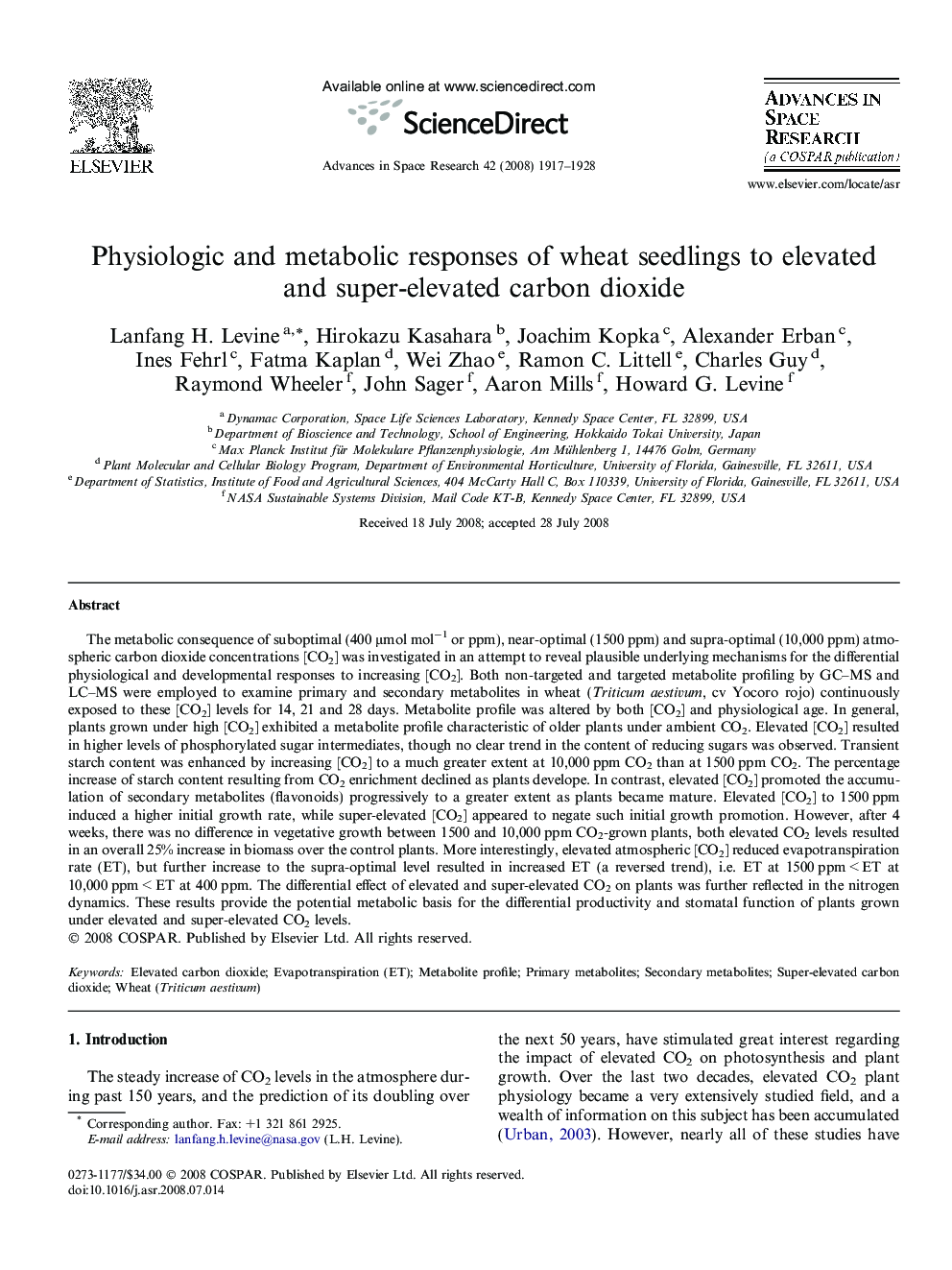| کد مقاله | کد نشریه | سال انتشار | مقاله انگلیسی | نسخه تمام متن |
|---|---|---|---|---|
| 1767185 | 1020180 | 2008 | 12 صفحه PDF | دانلود رایگان |

The metabolic consequence of suboptimal (400 μmol mol−1 or ppm), near-optimal (1500 ppm) and supra-optimal (10,000 ppm) atmospheric carbon dioxide concentrations [CO2] was investigated in an attempt to reveal plausible underlying mechanisms for the differential physiological and developmental responses to increasing [CO2]. Both non-targeted and targeted metabolite profiling by GC–MS and LC–MS were employed to examine primary and secondary metabolites in wheat (Triticum aestivum, cv Yocoro rojo) continuously exposed to these [CO2] levels for 14, 21 and 28 days. Metabolite profile was altered by both [CO2] and physiological age. In general, plants grown under high [CO2] exhibited a metabolite profile characteristic of older plants under ambient CO2. Elevated [CO2] resulted in higher levels of phosphorylated sugar intermediates, though no clear trend in the content of reducing sugars was observed. Transient starch content was enhanced by increasing [CO2] to a much greater extent at 10,000 ppm CO2 than at 1500 ppm CO2. The percentage increase of starch content resulting from CO2 enrichment declined as plants develope. In contrast, elevated [CO2] promoted the accumulation of secondary metabolites (flavonoids) progressively to a greater extent as plants became mature. Elevated [CO2] to 1500 ppm induced a higher initial growth rate, while super-elevated [CO2] appeared to negate such initial growth promotion. However, after 4 weeks, there was no difference in vegetative growth between 1500 and 10,000 ppm CO2-grown plants, both elevated CO2 levels resulted in an overall 25% increase in biomass over the control plants. More interestingly, elevated atmospheric [CO2] reduced evapotranspiration rate (ET), but further increase to the supra-optimal level resulted in increased ET (a reversed trend), i.e. ET at 1500 ppm < ET at 10,000 ppm < ET at 400 ppm. The differential effect of elevated and super-elevated CO2 on plants was further reflected in the nitrogen dynamics. These results provide the potential metabolic basis for the differential productivity and stomatal function of plants grown under elevated and super-elevated CO2 levels.
Journal: Advances in Space Research - Volume 42, Issue 12, 15 December 2008, Pages 1917–1928